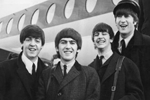- Register
- Log in to Tune-In
- Wishlist (0)
-
Shopping cart
(0)
You have no items in your shopping cart.
Beatles News

British musician Zak Starkey and his wife Shhh have launched the recording of a reggae album in Jamaica. The project started in December of 2017 and is called the Red Gold Green and Blue project. The project is influenced by Blues music and will see some of Jamaica’s greatest reggae artists performing on the album. So far some of the artists who have recorded on the album have been Mykal Rose, Toots Hibbert, Big Youth, Sly and Robbie, Tony Chin and Freddie Mcgregor, all stalwarts in the reggae music industry. The project was recorded at a secret studio in Ocho Rios Jamaica which was set up by Grammy award winning producer Rob Fraboni. The project manager is reknowned USA based entertainment lawyer Cameron Husty. Several first class engineers were flown in from London Uk with Jamaica’s own Grammy award winning engineer Barry Ohare also adding magic to the project.
Source: wicz.com
details
Stella McCartney has revealed how she relies on the help of an A-list meditation guru after turning to the practice following her mother's death. The fashion designer, 46, practises Transcendental Meditation with Californian teacher Bob Roth, who also counts Oprah Winfrey, Hugh Jackman and Tom Hanks among his glittering list of clients.
Transcendental Meditation, or TM, has been practised in India for thousands of years but was popularised by Stella's father Sir Paul McCartney and The Beatles in the 1960s. Stella McCartney, 46, turned to Transcendental Meditation to help her overcome the death of her mother Linda in 1998. Her father Sir Paul, pictured in 2014, has practised it since the 1960s. The fashion designer practises Transcendental Meditation with Californian teacher Bob Roth, who also counts Oprah Winfrey, Hugh Jackman and Tom Hanks among his clients. At the time the group made headlines when they studied under controversial guru Maharishi Mahesh Yogi.
Stella, who has four children with husband Alasdhair Willis, creative director of Hunter, grew up as the child of two TM practioners but only adopted the practice after losing her mother Linda to breast cancer in 1998.
Source: By Stephanie Linning details

You probably won’t meet a bigger Beatles fan in Derby - and this just goes to prove it.
Derek Oldfield is such a big fan of the famous foursome that he has spent the past five years converting his garage to create his very own Beatles bar. The 65-year-old from Allenton firmly believes it is the best in the country. Unfortunately the bar is not open "Eight Days A Week" – not all things can be perfect but I suppose we can "Let it be".
The bar is filled with hundreds of items of Beatles memorabilia any fan would love to have in their home.
The Beatles are regarded as one of the best bands the world has ever seen. The band, comprising Paul McCartney, John Lennon, Ringo Starr and George Harrison, dominated the 1960s before enjoying success as solo artists in the 1970s.
Source: derbytelegraph.co.uk/Nigel Slater
details
Geri Horner has purchased a car which previously belonged to Ringo Starr.
The 45-year-old singer - who has 11-year-old daughter Bluebell with her former partner Sacha Gervasi, and 12-month-old son Montague with her husband Christian Horner - has revealed she once splashed the cash on a Mini which was owned by the Beatles rocker, and although she spent more than she would have liked on the motor, she knows it has collectible value.
When asked what her most extravagant purchase has been, she said: "I bought Ringo Starr's Mini. It was a lot of money for a Mini but it belonged to a Beatle, so it's a collector's item. It's a piece of history."
Although it's likely the former Spice Girl doesn't drive the valuable vehicle, if she did take it out for a spin she'd make sure not to put a dent in it whilst parking, as she believes "reverse parking" is one of her hidden talents.
Source: therogersvillereview.com
details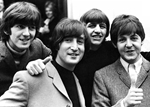
New Delhi: A throwback to Ob-la-di, Ob-la-da... as an exhibition in the United Kingdom to celebrate 50 years of the Beatles' visit to India and the seven-week stay at Maharishi Mahesh Yogi's ashram in 1968, is all set to open in London next month. A sitar used by the Pandit Ravi Shankar who introduced Indian classical music to the Fab Four will be the center of attraction at the exhibition. The sitar is being loaned to the Beatles Story museum in Liverpool by the Ravi Shankar Foundation.
Diane Glover, manager at the Beatles Story museum said the exhibition will feature never-before-seen memorabilia, photographs and personal accounts from the people who spent time with John Lennon, Paul McCartney, Ringo Starr and George Harrison in Mahesh Yogi's ashram on the banks of the Ganges.
Source: All India | Edited by Debjani Chatterjee ndtv.com
details

INDIANA “It’s boring almost beyond belief,” British rock critic Nik Cohn wrote of the Beatles’ self-titled album shortly after it came out in November of 1968. Cohn’s brickbat was just one of two negative reviews the New York Times published upon the release of The Beatles. (You probably know it better as the White Album.) Those responses, though, may say less about the record’s virtues than the way it upended listeners’ expectations. On 1967’s Sgt. Pepper’s Lonely Hearts Club Band, the Fab Four polished its pop instincts. The Beatles, by contrast, was scruffy and centerless, its thirty songs encompassing mock-Beach Boys vocal harmonies (“Back in the U.S.S.R.”), psychedelic folk (“Wild Honey Pie”), proto-punk (“Helter Skelter”), sound collage (“Revolution 9”), and plenty more besides.
Source: By Mark Athitakis | HUMANITIES
details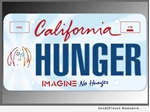
The California DMV (Department of Motor Vehicles) has commenced the pre-sale to put the iconic self-portrait image of John Lennon on California license plates which will help fund the state’s food banks. The special license plate features the famous John Lennon self-portrait image and the slogan, “IMAGINE no hunger.” Proceeds from sales will be administered by the California Department of Social Services (CDSS) and distributed to the California Association of Food Banks (CAFB) to be utilized throughout the state of California for food bank programs.
The plates are available for pre-order now, for both automobiles and motorcycles, at http://CaliforniaImagine.com/.
The John Lennon self-portrait image provides a powerful symbol of his humanitarian legacy, raising awareness to the need to address hunger in our state and providing an image that will promote significant funding to help end hunger in California.
Source: tippnews.com
details
According to Philip Norman, author and chronicler of the Beatles' rise and fall, had it not been for the trip, the band would have likely separated in 1967, right after the death of their manager and father-figure Brian Epstein.
Jaipur
Contrary to the popular belief that the Beatles' 1968 trip to Rishikesh set in motion the English rock band's eventual fallout, it was, in fact, that visit that delayed the split till 1970.
According to Philip Norman, author and chronicler of the Beatles' rise and fall, had it not been for the trip, the band would have likely separated in 1967, right after the death of their manager and father-figure Brian Epstein.
Source: news18.com
details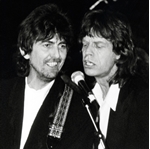
The debate between the Beatles and the Rolling Stones has been going on ever since they first crossed paths on the charts 53 years ago. The argument at the time, and one that still persists, was that the Beatles were a pop group and the Stones were a rock band: the boys next door vs. the bad boys of rock. These two legendary bands will engage in an on-stage, throw down - a musical 'showdown' on February 21 at the Bankhead Theater courtesy of tribute bands Abbey Road and Satisfaction - The International Rolling Stones Show.
Taking the side of the Fab Four is Abbey Road, one of the country's top Beatles tribute bands. With brilliant musicianship and authentic costumes and gear, Abbey Road plays beloved songs spanning the Beatles' career. They face off against renowned Stones tribute band Satisfaction - The International Rolling Stones Show, who offer a faithful rendition of the music and style of Mick Jagger, Keith Richards and the bad boys of the British Invasion.
Source: independentnews.com
details
The John Lennon Educational Tour Bus (The Lennon Bus), the premier non-profit 501(c)(3) state-of-the-art mobile production facility that provides hands-on experiences for students of all ages, presented by Other World Computing (OWC), makes its return to The 2018 NAMM Show at the Anaheim Convention Center with special guests Bootsy Collins, legendary bass player, and Andy Grammer, multi-platinum recording artist. Kicking off at NAMM, and chock full of new gear and equipment, the Lennon Bus will stop in cities across America throughout the year including Sacramento, Texas, Chicago, New York, Atlanta, Miami and many more.“Kicking off the tour at NAMM has become somewhat of a staple in the Lennon Bus legacy. We feel more connected to the crowd each year, and the energy at NAMM gives us the motivation and drive needed to get on the road to inspire young people across the U.S.,” said Co-Founder and Executive Director Brian Rothschild. “With the involvement of OWC, Bootsy Collins and Andy Grammer, this NAMM Show will be one to remember.”
Source: bassmusicianmagazine.com

The Grammy Awards are Sunday, the culmination of the awards season for the music industry. The award for Album of the Year is the big one, and this year's nominations are Childish Gambino, Jay-Z, Kendrick Lamar, Lorde and Bruno Mars. Adele took top honors Last year, shocking everyone who thought Beyonce was a lock for her album "Lemonade."
Our current Head2Head trivia champ Amy Liu is being challenged by her fiance, David Yang, who does small business consulting.
Questions
1. Who is the oldest comedian to win a Grammy?
2. Which three U.S. presidents have won Grammy awards?
Source: By Rebekah Bradford Special to the Post and Courier
details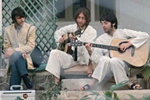
In rumpled white kurtas and pyjamas, John Lennon and Paul McCartney strum their guitars on the steps of a verandah. Ringo Starr, a bit out of place in a long coat, looks on.
With marigold garlands around their necks, Starr and McCartney -- this time with George Harrison -- sit cross- legged on a dais, in front of yoga guru Mahesh Yogi, and with a host of others.
The stills, among the many photographs that capture the seven weeks the Fab Four spent in the yogi's ashram near the Ganges, will be on display in Liverpool, UK, from next month to mark 50 years of The Beatles in India, an event that will also be celebrated by the ashram, organisers said.
One of the sitars of composer-instrumentalist Ravi Shankar, who famously introduced The Beatles to Hindustani classical music, will also be on display at Liverpool.
Source: outlookindia.com
details
The Beatles and their wives at the Rishikesh in India with the Maharishi Mahesh Yogi, March 1968. The group includes Ringo Starr, Maureen Starkey, Jane Asher, Paul McCartney, George Harrison (1943 - 2001), Patti Boyd, Cynthia Lennon, John Lennon (1940 - 1980), Beatles roadie Mal Evans, Prudence Farrow, Jenny Boyd and Beach Boy Mike Love.
OPINION: Here's a story to please anyone who thinks that the signature note of the universe is irony. But first a little research task for you.
Go find someone of my generation. It shouldn't be hard. Look for a stately mien, hard-earned wisdom and slumping dugs. If unsure ask for help fixing your cell phone. If your interviewee bursts out laughing you're there.
Now tell him or her you want to know the first thought that comes into their mind when you say the word maharishi. And I'll wager a fat bottle of shiraz that anyone my age will say the Beatles.
To my generation all pop music is a footnote to the Beatles. When I was young it was compulsory to have an opinion on all four members of the group. I thought Lennon pretentious, McCartney saccharine and the other two characterless and I've seen no reason since to change my view. Like everyone else I've got several details
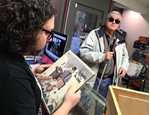
“Don’t butcher the butcher cover album,” the saying goes.
Good advice. This famously rare Beatles record could be worth some serious money. And one local man has a copy he can’t see.
Peter Smith, now blind, bought it when he was a child living with his family in Puerto Rico for a spell.
“That little 8-year-old boy made a very wise investment,” he said.
Yes he did.
The 1966 record, called “Yesterday and Today,” originally featured a weird photograph of the Fab Four dressed as butchers, holding slabs of meat and doll parts. Some, citing Paul McCartney’s comments at the time, interpreted the image as a protest of the Vietnam War. It features songs such as "Drive My Car," "Nowhere Man," "Yesterday," "We Can Work It Out" and "Day Tripper."
The record company had 750,000 copies made, but the photograph was condemned when it hit radio stations and stores, prompting Capitol Records to recall The Beatles’ ninth U.S. release on its label.
Source: Parker Adam Parker aparker@postandcourier.com

